Are you a fan of Middle Eastern cuisine and looking for an interesting spice mix to take your dishes to the next level?
Ras el Hanout is the perfect blend, but it can be difficult to find in some areas.
No need to worry – you don’t have to sacrifice flavor if you cannot find authentic ‘Ras el Hanout’ spices.
In this blog post, we will look at some options to substitute for Ras el Hanout that will still put flavor into your food without searching far and wide for ingredients!
What Is Ras el Hanout?
Ras el hanout is a traditional North African spice blend that has become popular worldwide.
It usually contains over 20 different spices, including cardamom, cumin, coriander, paprika, turmeric, nutmeg and more.
Ras el hanout can add intense flavor and depth to dishes like couscous, tagines, lamb, and even desserts.
It can be added to stews, sauces, marinades and salads for a fragrant flavor boost.
Ras el hanout is also used as a condiment in some cultures. Try it on grilled meats or vegetables for an extra kick of flavor!
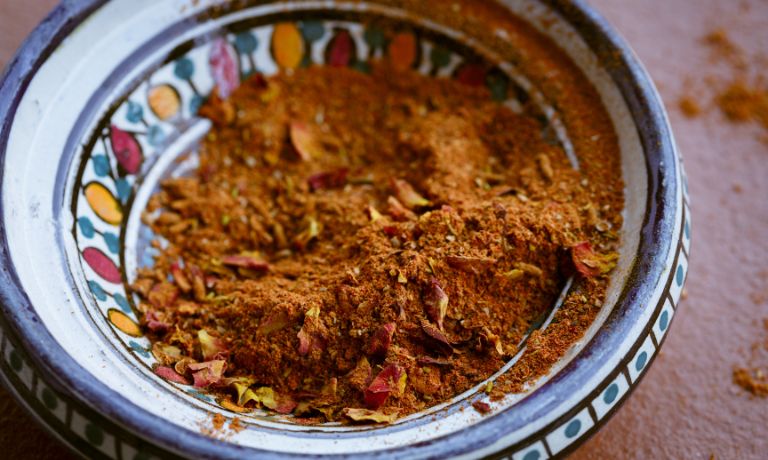
Substitutes For Ras el Hanout
Ras el Hanout is a traditional North African spice blend.
If you don’t have Ras el Hanout on hand, it can be difficult to find a substitute that will give you the same flavor profile.
Fortunately, several alternative options work well as Ras el Hanout:
Garam Masala
Garam Masala is a blend of spices native to India, typically consisting of cardamom, coriander, cumin, pepper, and cinnamon.
This spice mix is traditionally used in Indian cuisine for its warm flavor and aromatic properties.
[display-posts id=”2796″ image_size=”thumbnail” posts_per_page=”1″]
It can be a great substitute for Ras el Hanout in cooking as it contains many of the same spices, albeit in different proportions.
Garam Masala is also less pungent and milder than Ras el Hanout, making it better suited for dishes that don’t require an intense flavor profile.
This spice blend can add a unique warmth and depth to dishes without overpowering them.
Therefore, Garam Masala is a great alternative for those experimenting with different flavors and spice combinations in their cooking.
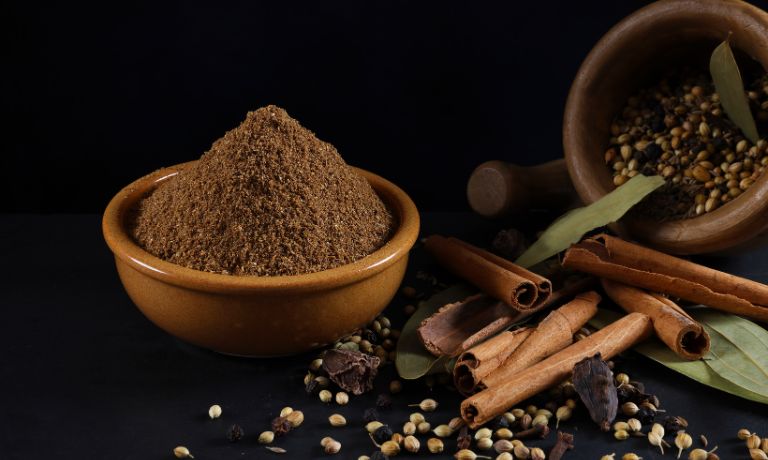
Baharat
Baharat is a blend of spices from the Middle East and North Africa.
It typically includes combinations of black pepper, cloves, cumin, cardamom, nutmeg, coriander and paprika.
The essential components of Baharat vary by region and family recipes.
However, in general, it is an aromatic combination that adds a complex depth of flavor to any dish.
Baharat is often used as a substitute for Ras el Hanout in recipes, as it can provide similarly complex flavors without the heat associated with Ras el Hanout.
Additionally, Baharat generally contains fewer ingredients, making it easier to source and use in cooking.
Because each region has its unique Baharat blend, cooks are encouraged to experiment with the combinations available to find their favorite.
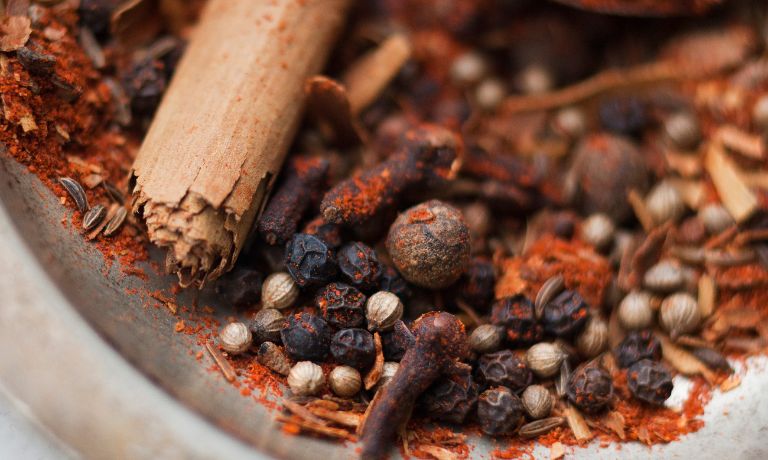
Tsire Spice
Tsire Spice is a spice blend from Ethiopia, also known as berbere.
It has a deep red color and a complex flavor profile that is both spicy and smoky.
[display-posts id=”2779″ image_size=”thumbnail” posts_per_page=”1″]
Traditionally used in Ethiopian cuisine, the main ingredients of Tsire Spice include chili peppers, garlic, ginger, cardamom, basil, coriander seed, cumin, ajwain, black pepper, and fenugreek.
It can season vegetables, meats, stews, soups and more.
The main difference between Tsire Spice and Ras el Hanout is the amount of chilis used.
Tsire Spice contains more chili peppers, lending a much spicier flavor than Ras el Hanout.
Additionally, Tsire Spice has an earthy kick thanks to its other ingredients like garlic, ginger and cardamom.
Both spices have their unique flavor profiles, so it depends on the dish you are preparing as to which is best.
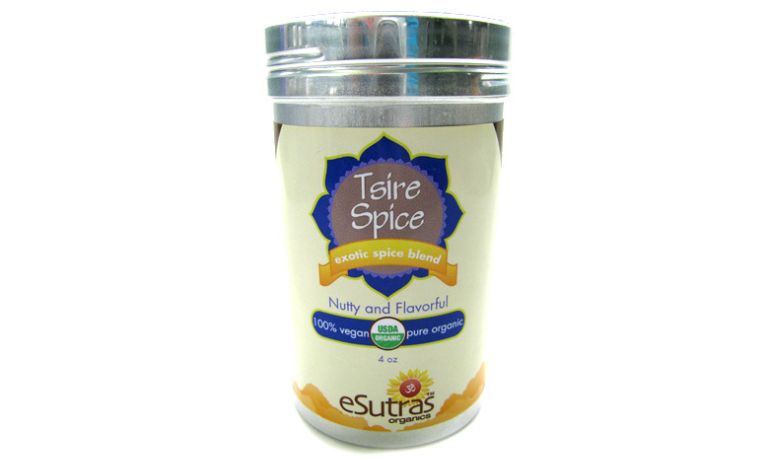
Ground Coriander
Ground Coriander is the name given to the ground powder of coriander seeds.
It has a strong, nutty flavor and aroma that can be used instead of Ras el Hanout in many dishes.
Its taste is slightly less intense than Ras el Hanout, but it does have some similarities when added to certain recipes.
Ground coriander is thought to have a cooling effect on dishes, making it ideal for spicier meals.
It can also be used to accentuate the sweetness of many vegetables and fruits, making it an excellent choice for adding flavor to salads and other side dishes.
Ground Coriander is also very versatile – it can be used in savory and sweet dishes to add depth of flavor.
When using ground coriander, add about half the amount recommended for the Ras el Hanout to achieve the desired flavor.
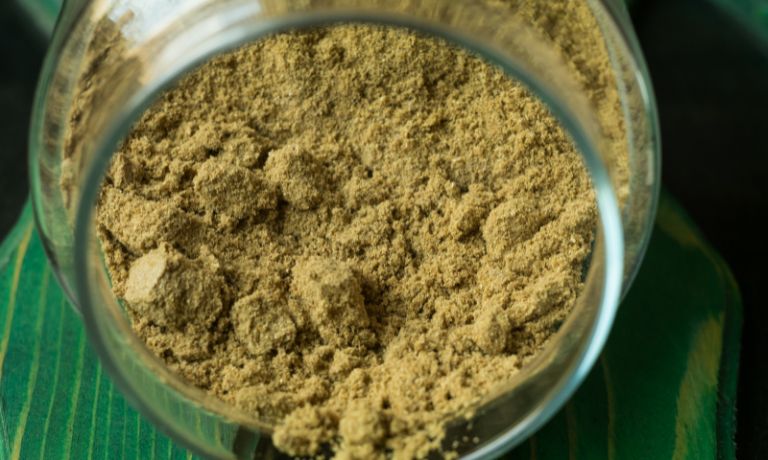
Curry Powder
Curry powder is a blend of spices used widely in Indian and South Asian cuisine, such as curries, stews, chutneys, and other dishes.
It is usually made up of coriander, cumin, turmeric, ginger, fenugreek, cardamom, pepper and other spices.
[display-posts id=”2762″ image_size=”thumbnail” posts_per_page=”1″]
Curry powder can be a great cooking substitute for Ras el Hanout, as it provides similar flavors and aromas without intensity.
The blend of spices used in curry powder is generally milder and more versatile than Ras el Hanout.
It also adds a bright, yellow hue to dishes that Ras el Hanout can’t provide.
Curry powder is the perfect alternative to Ras el Hanout when you need milder flavors in a dish or if you don’t have access to more exotic ingredients.
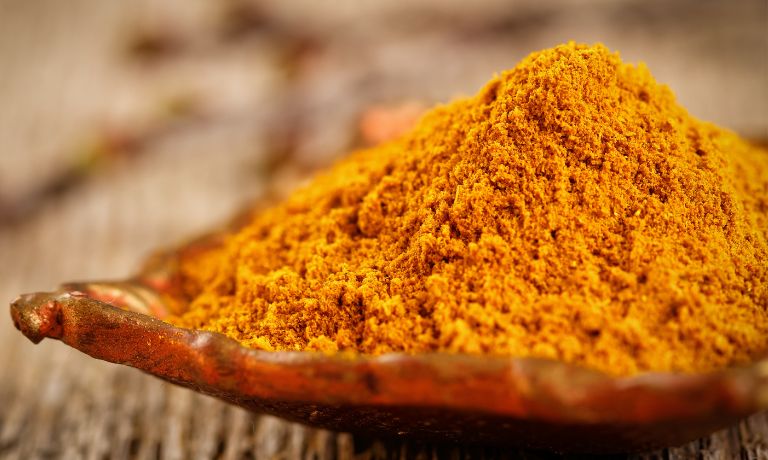
Harissa Paste
Harissa paste is a fiery, aromatic condiment from chilis, garlic, and spices.
It’s commonly used in North African and Middle Eastern cuisine to accompany dishes such as couscous and stews.
While harissa paste might not be an exact replacement for Ras el Hanout spice mix, it can give dishes a similar flavor profile with its blend of spices.
Harissa paste is also milder than Ras el Hanout, so it can be used in dishes where the heat needs to be toned down slightly.
Additionally, it can add depth and complexity to any dish, making it an ideal replacement for Ras el Hanout.
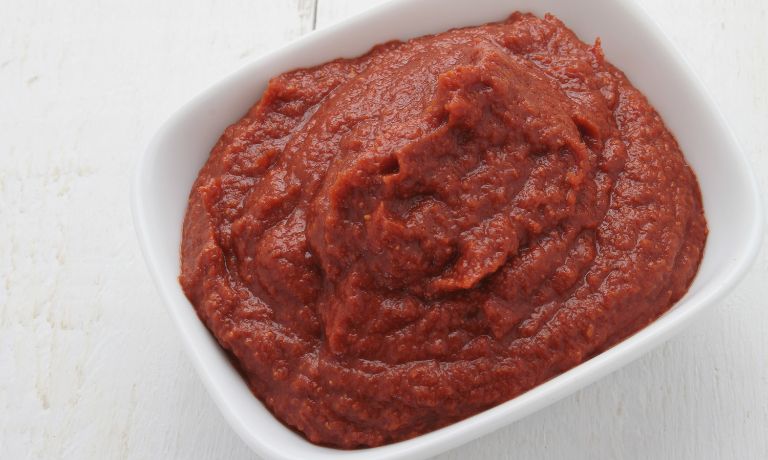
Za’atar
Za’atar is a Middle Eastern spice blend of herbs, sesame seeds, and sumac.
It’s commonly used to accompany olive oil and bread like pita or flatbreads.
Its flavor profile has hints of thyme, oregano, cumin, coriander, garlic, and salt.
[display-posts id=”2354″ image_size=”thumbnail” posts_per_page=”1″]
It is milder than Ras el Hanout and can provide a slightly different flavor to a dish without overpowering it.
Additionally, Za’atar adds an element of freshness that may otherwise be lacking in dishes without Ras el Hanout.
Za’atar can be added to various dishes such as stews, soups, salads, and grilled meats.
It can also be sprinkled over vegetables before roasting or stirred into hummus for an extra flavor kick.

FAQs
Can You Replace Ras el Hanout With Garam Masala?
Yes, you can substitute garam masala for ras el hanout in many recipes.
The two spices are similar in flavor and can be used interchangeably in many dishes.
However, some subtle differences between the two will affect your dish’s overall taste.
Is Allspice Similar To Ras el Hanout?
No, Allspice and Ras el Hanout are two different spice blends.
Allspice is a blend of ground spices, including ginger, cinnamon, cloves, cardamom and nutmeg.
Is Ras el Hanout Considered A Kind Of Curry Powder?
No, Ras el Hanout is not considered a kind of curry powder.
Ras el Hanout is a North African blend of spices often used in Moroccan cooking.
It typically contains cardamom, cumin, cloves, cinnamon and more than 20 other different spices that vary depending on the region and recipe.
Curry powders are similar but generally contain more turmeric, which gives them a yellow-orange color.
While Ras el Hanout is sometimes used in curry dishes, it does not contain the same ingredients as most curry powders.
Conclusion
If you’re looking for a substitute for Ras el Hanout in your cooking, there are several options available.
Ground coriander, curry powder, harissa paste, and za’atar can all be used to achieve similar flavor profiles as Ras el Hanout without being overly spicy or intense.
Experimenting with different spices and flavors can help to create exciting dishes that bring the taste of different cuisines into any kitchen!

